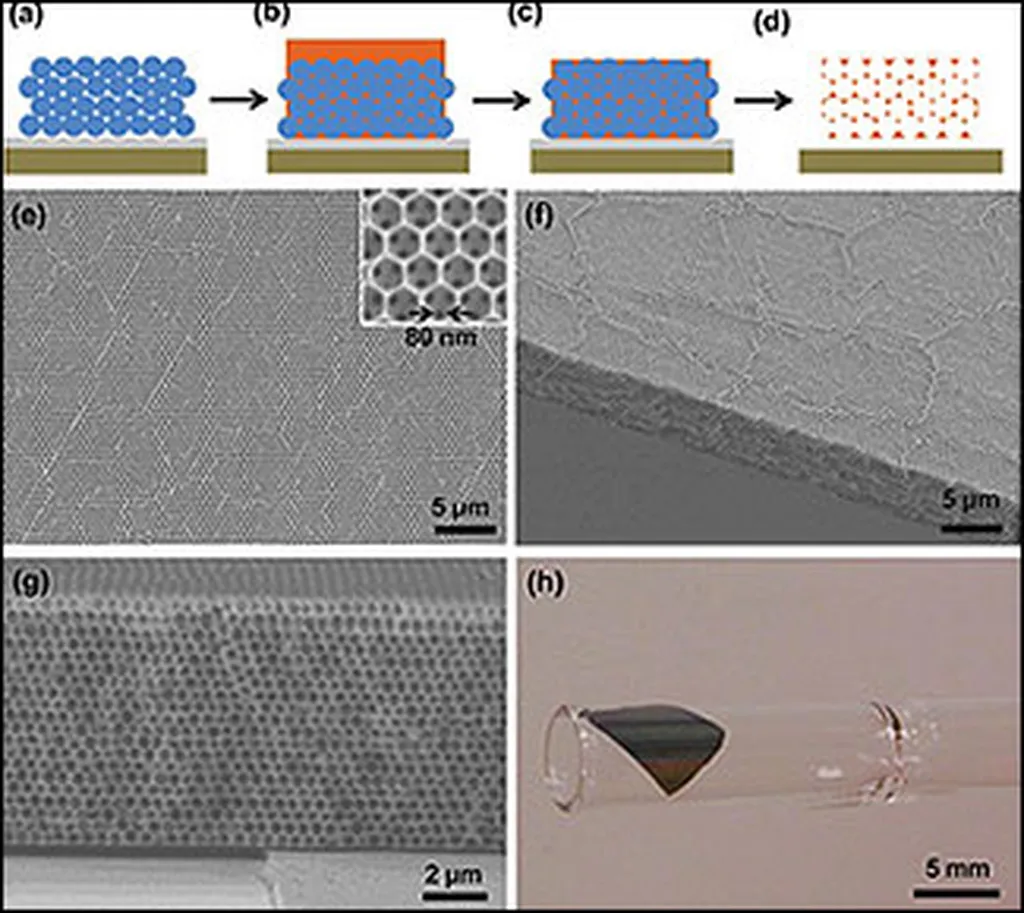In the heart of Budapest, researchers are unlocking the potential of a material that could revolutionize the energy sector. Hamsasew Hankebo Lemago, from the Budapest University of Technology and Economics, is leading the charge in exploring inverse opal photonic crystals (IOPCs), a material with unique properties that could enhance everything from solar energy harvesting to pollution control.
IOPCs are highly ordered, porous nanostructures that exhibit remarkable optical, electronic, and mechanical properties. Imagine a sponge-like material, but instead of holes, it’s filled with tiny, perfectly arranged particles that interact with light in extraordinary ways. This periodicity gives rise to photonic band gaps and slow photon effects, essentially creating a material that can manipulate light to enhance its optical performance.
The synthesis methods of IOPCs are as diverse as their applications. From self-assembly to chemical vapor deposition, each technique plays a crucial role in tailoring the material’s structural and functional properties. “The beauty of IOPCs lies in their versatility,” says Lemago. “By tweaking the synthesis process, we can fine-tune the material to suit a wide range of applications.”
One of the most promising areas of application is photocatalysis. IOPCs can be used to degrade pollutants in water and even split water molecules to produce hydrogen, a clean and renewable energy source. The incorporation of plasmonic nanoparticles and heterojunctions into IOPCs has been shown to greatly enhance light-matter interactions, resulting in unprecedented efficiency in photocatalytic applications.
But the potential doesn’t stop there. IOPCs also show promise in biological sensing and energy storage, opening up avenues for advanced technological solutions. Moreover, advancements in low-temperature synthesis methods like plasma-enhanced atomic layer deposition (ALD) are making it possible to create flexible IOPC-based devices, increasing their applicability in wearable optoelectronics.
The commercial impacts for the energy sector are substantial. As the world grapples with the challenges of climate change and the need for sustainable energy sources, materials like IOPCs could provide a significant boost. They could enhance the efficiency of solar panels, improve water purification systems, and even contribute to the development of advanced energy storage solutions.
Looking ahead, Lemago and his team are focusing on AI-driven design and computational modeling to optimize photonic band gap structures and improve their performance. This research, published in the journal *Applied Surface Science Advances* (which translates to *Advances in Applied Surface Science*), provides a comprehensive overview of the fabrication strategies, fundamental properties, and emerging applications of IOPCs, demonstrating their significance in next-generation materials science and engineering.
As we stand on the brink of a technological revolution, materials like IOPCs could very well be the key to unlocking a sustainable future. With continued research and development, we may soon see these remarkable materials playing a pivotal role in the energy sector and beyond.

